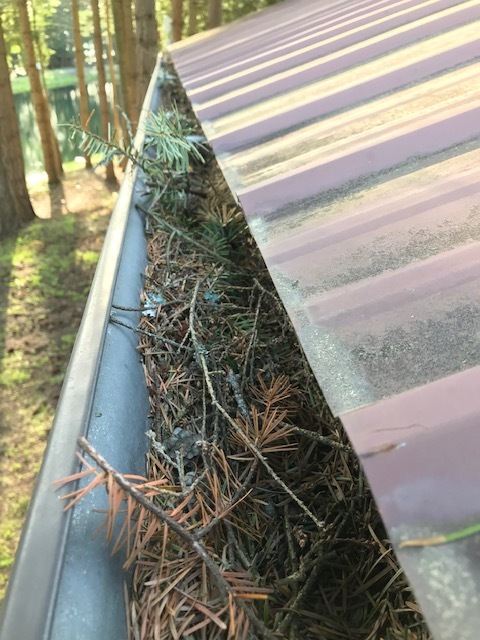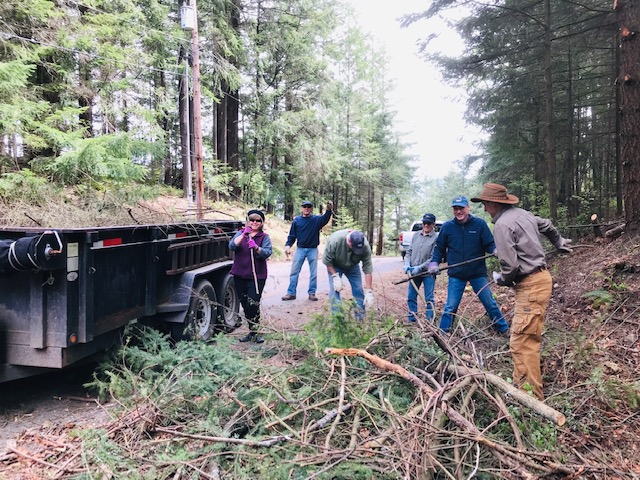Wildfire Prep Day with Scott Josiah
/On May 4 we were privileged to host Scott Josiah, retired Nebraska state forester and director of the Nebraska Forest Service. Scott moved to Lummi Island in 2017 and serves on the board of the Lummi Island Heritage Trust.
SCOtt josiah presents information on WILDFIRE Prep day
This is what we learned for Wildfire Prep Day:
Wildland fire on Lummi Island
In the past, fires occurred on Lummi Island after logging removed old growth and generated large amounts of slash: 1894 on the north end, 1908 in the middle of the island, and 1925 on the southwest and west side of the mountain.
Today there is far less dead fuel on the ground. Ground fires are most common with some torching of individual trees where the ground fire can get into the crowns of trees via ladder fuels. This happened on Portage Island on July 4, 2015.
We can expect to have wildland fires on Lummi Island, especially with expected longer dry seasons as climate change intensifies. Surprisingly, there is an increased fire risk during the winter nor’easters—when the relative humidity is low.
Firewise practices reduce fuels around the home and other structures. This keeps lower intensity ground fires from becoming explosive, high intensity crown fires.
Scenic Estates is designated a high risk area for wildfire by the Washington DNR
How do homes catch fire?
In catastrophic fires, sometimes it’s the radiant or connective heat from nearby burning vegetation that ignites the house. But in most cases, it is an ember storm of firebrands. The embers blow into and ignite flammable debris on and under porches, decks, firewood piles, gutters, and unscreened attic vents. Fire then spreads to the house.
embers can start a fire in gutter debris
In some intense cases, fires spread from house to house without burning much vegetation.
In fact, Scenic Estates is designated as a high risk area for wildfire by the Washington Department of Natural Resources. Both ember driven and house-to-house ignition could occur due to the density of vegetation, the closeness of structures, the steep topography, and lack of structure maintenance.
Steps you can take
The Firewise program is a common sense approach to reduce the risk of wildfire to your home and structures. It is a two-fold strategy to 1) reduce the density and proximity of vegetation around your home, and 2) reduce the flammability of your home itself.
Here are some straightforward actions you can take in preparation for the dry season:
Remove brush—especially dead branches—near structures. It is best to do this in late winter before birds nest.
Remove ornamental junipers and Scotch Broom (a flammable invasive weed) near buildings.
Remove branches from coniferous trees to a height of 15-20 feet.
Thin trees downhill and around structures to reduce tree density, especially removing smaller understory trees and “ladder fuels”.
Use fire-resistant plants. Many native deciduous plants are fire-resistant. See this publication for more information.
Clean gutters and roof debris, including moss.
Avoid placing bark and wood chip mulch right up against the house.
Remove stuff and debris on and under decks, and around the house. Store under cover and well away from the house.
Don't remove all the trees!
In forestry this is called ‘losing control of the site’. Land suddenly exposed to full sun results in vigorous brush and tree seedling growth. These plants are often flammable, especially when they dry out. Leaving a high canopy of shady conifers dramatically slows brush growth and makes maintaining a fire-resistant zone much easier.
a hillside where all trees were cut down. The resulting slash is a wildfire risk. THIS area will require more maintenance to reduce wildfire fuels. leaving some trees as a canopy helps to slow brush growth.
A cleared lot after about 10 years. invasive vines and seedling trees have full sun to grow rapidly. THis increases wildfire hazard and creates more work to control a fire-resistant zone.
Harden your home against wildfire
Wood shake roofs are risky. Replace with fire-rated asphalt shingles or metal roofing.
Screen all vents with metal insect screening.
Metal or fiber cement siding is more fire-resistant than wood.
Firewise Efforts on Lummi Island
A new island-wide initiative is being launched by the Lummi Island Fire Department, Disaster Preparedness Committee. They are forming a small team of about five people from across the island to lead the effort. This will be primarily an educational effort with presentations, work days, and field tours. This may also involve applying for grants to assist property owners reduce risks on their own lands.
Interested?
Email Scott Josiah at sjosiah2@unl.edu or Isaac Colgan at isaac@lisecc.com
Thank you for the participation!
From left: Patricia Kelly, David CANTERMAN, Jeff Smith, Joan MOYE, Scott JOsiah, & Barry Watson.
Fourteen people attended the presentation and many stayed for the work party that cleared brush and branches from the hill below the Scenic Estates storage shed near the Swim Lake. Mark Sexton donated his dump trailer. Because of all the help, about 36 cubic yards of debris was quickly removed to compost at the Aiston Preserve as part of the Lummi Island Heritage Trust reclamation program of an old quarry. Thank you!








